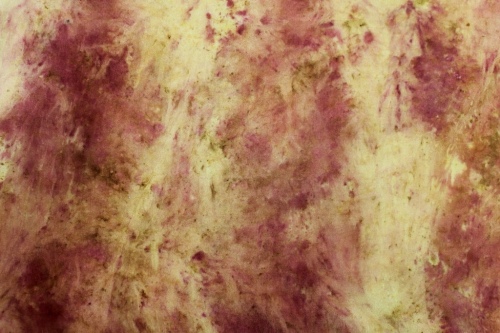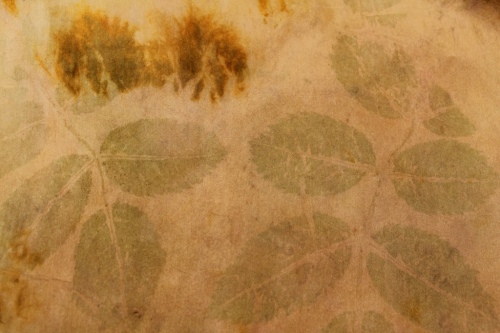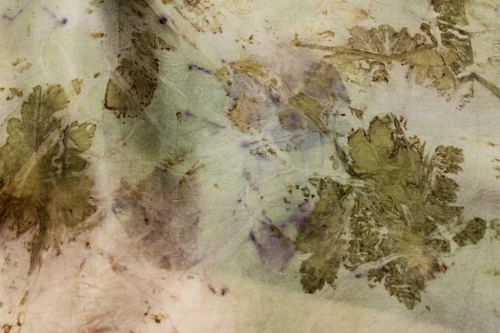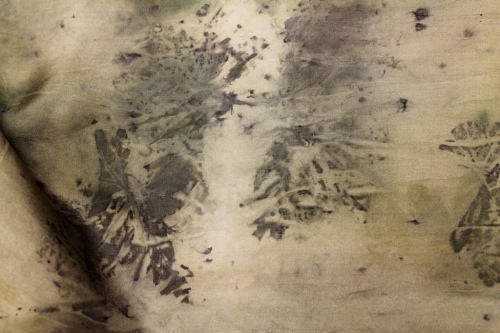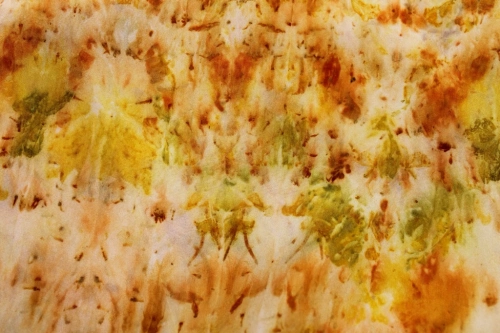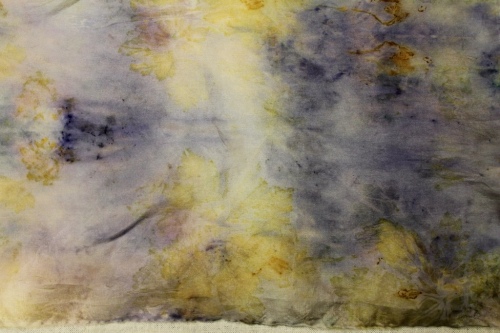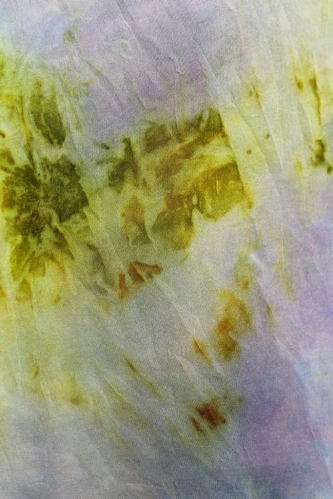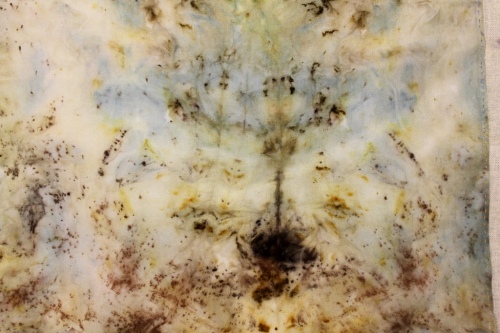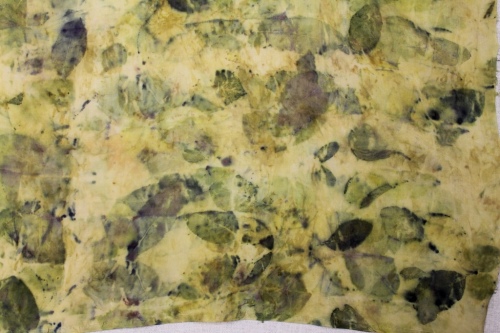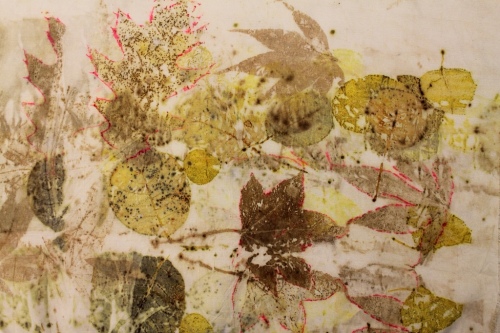
For information on how to coax the pink-red and yellow-orange range of colours from the dried safflower petals on silk, wool, cotton and linen, I relied mostly on Jenny Dean’s book “Wild Colour”.
Safflower petals contain red dyes and two kinds of yellow dyes, each of which can be extracted from the petals. To obtain the first yellow, one simply soaks the petals in cold water and squeezes out the colour. For red, one has to first remove (and save if you want yellow) all the yellow dye by thorough soaking and rinsing that colour out of the petals. The rinsed petals are soaked again in clear water and either ammonia (alkali) and/or vinegar (acid) is added to shift the pH of the solution in order to alter the colours (to yellows or pinks), depending on the type of fabric. Wool will never dye pink with safflower but cotton, linen and silk will. Silk, however, turns pink only after a second colour modifying stage.
Special note: No heat or cooking is involved in extracting the colours from safflower. It all happens with cold soaking.
First step was to obtain the basic yellow dye. I soaked the petals in cold water then squeezed and rinsed them, saving the yellow liquid in three separate pots. Then silk, cotton/ linen and wool were soaked in their own yellow dye baths and removed as the colour reached a shade I liked. I was aiming for a gradation of sorts.
After soaking for various periods of time, the wool, linen and cotton dyed various (and lovely!) shades of yellow, orange, coral and pink…the longer the soak, the deeper the colour. But I have not yet managed to get the glorious safflower pink on silk, only the yellows and corals and oranges for now…Next time…
To coax out the red dye from the safflower and make fibres pink:
Add alkali to the dye bath : ammonia
After soaking the petals and squeezing out the yellow dye (as above) , I resoaked the petals in water and added ammonia to raise the pH to 1o (as read on my meter: the dye bath pH was probably higher but my meter stops at 10), (Next time, I might try washing soda as the alkali.)
Add acid: Vinegar, 5% acetic acid
After an hour or so, I strained the dye bath and added some 5% acid vinegar to lower the pH to about 6. (Use some pH papers or a pH meter) Then I added my silk and the cotton cheesecloth and soaked overnight.
The silk became coral-orange and the cotton, bright pink – just as Jenny describes in “Wild Colour”!
Dyeing silk pink. Or not.
Alas. The discharge process did not work for me this time. To obtain pink on silk one needs a “carrier cloth” ( a kind of Surrogate Dye Mother? ) that has been dyed yellow first, then pink-dyed in saffflower; then it is coaxed by the alkali (The Midwife?) to to release its red dye back into the dye pot so that the colour will be available for the silk to “Adopt” when vinegar is added to the the dye pot.
Now that part happened successfully…because the bright pink cotton changed to lavender -grey in the alkali (ammonia)..But-but-but-but, and boo-hoo, the silk refused to go Pink. Instead, it stayed a coral-orange colour when I added the acid to create the correct dye environment for silk.
I am wondering if I was unable to obtain pink on my silk because the small piece of cotton cheesecloth that I put in the dye bath simply did have enough dischargeable red dye in the fibres to turn the silk pink. Next time I will try a larger piece of cotton with a much higher thread count.
Here are some pics of the colours I obtained, nevertheless. The longer the fibres soaked (hours or overnight or a whole day) in the cold dye, the deeper the colours became:
The dye pots contained silk (top), cotton (right) and wool(left).
Cotton and linen turned various shades of yellow, orange and pink, depending on threadcount, time in the dye bath and acid or alkali solutions (pinks in acid):

Cotton cheesecloth, a finer cotton gauze and vintage linen became pink in the yellow safflower dye when modified in an alkali -acid sequence.


I obtained several shades of yellow and orange on wool (from a vintage Jaeger wool skirt, taken apart) but no pink because safflower does not do that colour on wool. However, the cotton interfacing on the skirt waistband (right) took on pink dyes. (BTW, the colours in my photo were really pale so I tried to improve them by photoshopping them…hmmm…)
Next post: Eco prints on paper
This post’s Honour Roll:
http://www.jennydean.co.uk/wordpress/










